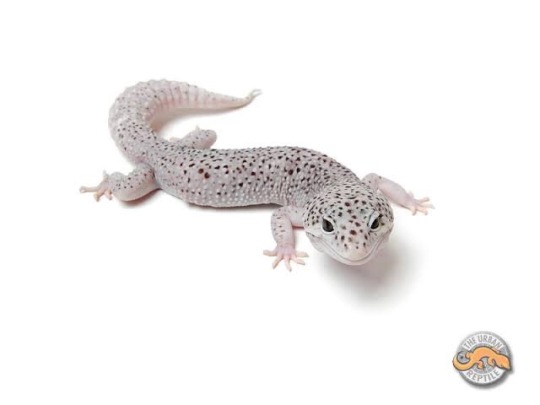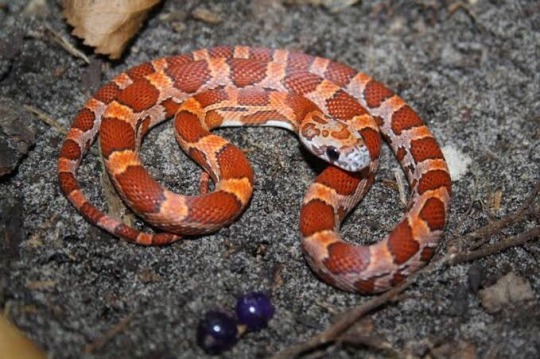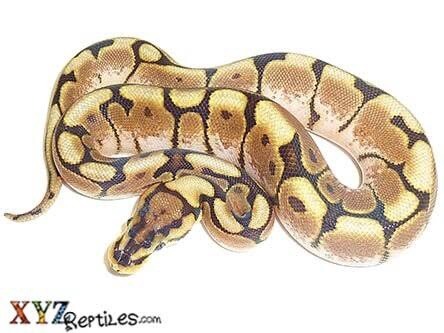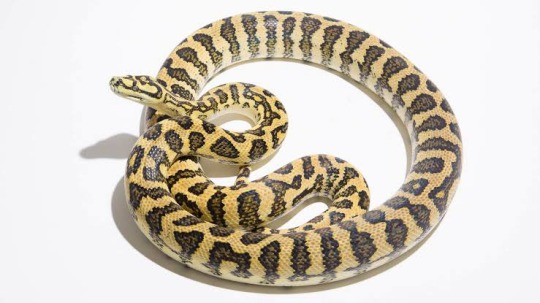#mentally I am an ill bred and deformed cat
Text

Playtime’s over
Rook noticed Cloche swatting the tassel of his brooch and let her have it for a bit, something about enriching and stimulating a cat’s mind?
#cat! cloche is best cloche#mentally I am an ill bred and deformed cat#I love love love rook’s new year wear#the way he wears the red eyeshadow/liner??? I’M SCREAMING HE AND CLOCHE MATCH NOW#oc: cloche🎊#cat scratches 🌸#twisted wonderland#twst#twst oc#rook hunt#twst rook#twst ocs#twst yuusona#twst art#twisted wonderland art#twst fanart#twisted wonderland fanart#twst new years#twst jp
825 notes
·
View notes
Text
Genetically unhealthy reptiles
So there are quite a few unhealthy reptile morphs out there and I only discovered most of them by fluke, so I thought I'd make a masterpost. There are likely many more which I haven't heard of yet, so feel free to expand on this post with others.
Enigma Leopard Geckos


The Enigma morph is one that covers the Geckos body in little spots that look like freckles, very cute but it comes with a devastating condition known as "Enigma syndrome” This disorder affects a Geckos fine motor control and results in many secondary symptoms such as stargazing (looking upwards frequently), walking around in circles frequently, wobbly and difficult walking, seizures, and an inability to catch prey due to their aim being affected from this condition. Overall it significantly decreases their quality of life. An animal may not demonstrate this condition for many years, it can come on years into their life. This is a dominant genetic disorder meaning any animal which is an enigma will pass this onto offspring. Even 'healthy' appearing animals will carry this gene and pass it along to offspring. The Enigma morph needs to be phased out completely since all who are Enigma have the potential to develop this disorder.
Sunkissed Corn Snakes


The Sunkissed morph is pictured above, rather striking in its vivid colouration. However the price for it is something known as "Stargazing Syndrome" which is pictured in the right side photograph. Stargazing syndrome is a vestibular syndrome (balance affecting condition) which prevents normal functionality of the central nervous system and causes these snakes to twist their necks and heads upwards towards the sky. Basically put, these snakes can't work out which way is up and are often found upside down on their backs. It affects these snakes by causing difficulty moving, disorientation, inability to right themselves into a normal position if on their backs, and sometimes even tremors and seizures. Once again a genetic disorder, however since its recessive you often won't know if the snake is a carrier or not. The only way to tell if a snake carries the stargazing trait is to breed them; any who prove to carry this trait should never be bred again.
Spider Ball Pythons


The Spider morph is absolutely stunning, characteristic of that 'drippy' black patterning on the body and a rather unique head stamp/pattern. It can come in many varieties since it's commonly bred into other morphs such as pied, banana, etc. However it causes something called "Wobble Syndrome" which is a severe neurological disorder. This is hypothesised to be caused by an error in the neural crest during embryonic development. The neural crest is responsible for arranging neurons in the correct positions and depositing pigmentation. This morph alters where pigment is usually placed in the body, giving them the gorgeous appearance, however it consequently prevents neurons from reaching their correct positions, hence the neurological disorder. Wobble Syndrome causes many severe and debilitating issues to the snake. The most noticeable being 'corkscrewing' which is where the snake will flip it's head and neck upside down, right way up, and upside down again in quick succession. However they are also affected by head tremors, difficulty moving, lack of coordination, inability to right itself if upside down, torticollis (neck spasms), poor muscle tone, and difficulty eating due to head wobbling and missed strikes. Wobble Syndrome is a dominant genetic disorder meaning any snake which expresses the spider phenotype will suffer from and pass on this disorder to offspring. It can range from barely noticeable to severe, and an animal may not suffer at first, but can develop the disorder after several years of being 'healthy'. The Spider morph needs to be phased out completely since all who are Spider have the potential to develop this disorder.
Jaguar Carpet Pythons


The Jaguar morph has to be one of the most visually stunning morphs out there, it's characterised by it's gorgeous spots which resemble a jaguars. However the price they pay for their beauty is once again, "Wobble Syndrome". Jaguars are identical to Spider Ball Pythons in their suffering, and it's even thought that the Neural Crest deformity is the cause for these guys too. It is important to note that there are several species who can carry the jaguar gene. The gene originated in Jungle Carpet Pythons but has since been bred into other Carpet Pythons (CP for short) species such as the Irian Jaya CP, Darwin CP, Coastal CP, and Diamond CP. Pretty much the only difference with the Jaguar morph is that it is not a dominant gene like the spider morph, and it's not a recessive gene like the sunkissed morph. The Jaguar gene is a co-dominant mutation. What that means is that the Jaguar gene is visible along with whatever other gene the snake carries. You almost always have two genes for something, and in codominance neither of those genes are recessive to the other, and neither are dominating to the other either. This means both genes express, so to put that into a visual sense (but not genetically accurate!) if you bred a black and a white cat together, the offspring would be black and white if they were co-dominant. This just like the spider and enigma morph means any snake which expresses the Jaguar phenotype has the ability to develop Wobble Syndrome and will pass it along to offspring. The Jaguar morph needs to be phased out completely since all who are Jaguar have the potential to develop this disorder.
Silkback Bearded Dragons and Scaleless Snakes


Silkback bearded dragons and Scaleless snakes are exactly what they sound like, they are completely devoid of any and all scales and instead only have the layer of skin present beneath reptile scales. I admit I do not know much about Scaleless snakes, but assume they suffer the same affects as the silkback bearded dragons so have included them here. Silkback bearded dragons are produced when two leatherback bearded dragons are bred together. The leatherback gene is co-dominant (it can also be recessive) and if a dragon receives two copies of this co-dominant gene then they are a silkback. Co-dominance means two genes are working together, so one copy of leatherback and one copy of normal scales means together these genes create a dragon who has reduced spikes and scales but they still have scales! Two copies of the leatherback gene means the co-dominance has nothing to partner with, so the dragon we get is completely devoid of scales. Now, for an animal which is supposed to have scales, having no scales comes with many severe issues. The main being that they suffer extreme shedding difficulty and have no protection from sharp objects or other dragons. Scalesless animals can easily be cut or punctured from ornaments in a tank which are safe for their scaled or leatherback counterparts. Even a basking log, brick, or rock can cut them if they run against it wrong. This means their tank needs to be almost empty or only have soft, pliable decor which provides no risk of injury. This can be severely damaging to the animals mental wellbeing as there is no enrichment opportunities for the animal. Shedding wise, these animals need to be soaked in baths almost daily to maintain skin hydration, and when it comes time to shed their shed will shrink to their skin and it's often for them to lose toes, bits of tail, or even get pieces stuck around their heads and necks which can cause severe damage. You can also not breed silkback bearded dragons (am unsure about Scaleless snakes?) pairing another dragon with a silkback will cause extreme injury. If the silkback is female, the male bearded dragon will cut her open with his claws as he mounts her and he will tear her shoulders and neck open where he holds her with his mouth. These injuries can be life threatening. Furthermore, if the silkback is male he may receive lacerations and cuts to his stomach upon mounting the female or he may be critically injured if she rejects him and bites or scratches in retaliation. If all of that isn't bad enough these scaleless animals also have an increased risk of illness due to decreased immunity (immunity decreased due to unknown reason) and suffer extremely reduced lifespans. Scalesless animals are an incredibly unnatural and disgusting morph which needs to be completely phased out.
That's all for my masterpost currently. There are likely many more unhealthy morphs I have yet to hear of, so please inform me if you know of any others I've neglected to mention and I shall research and add them here. Please do not ever support or purchase one of these animals as it encourages the breeding of severely unhealthy animals with significantly reduced quality of life. With so many healthy and wonderful morphs and species available there is absolutely no reason to ever purchase one of these.
#my posts#myposts#petblr#lizard#reptile#reptileblr#lizardblr#animalblr#herp#herpblr#snake#snakeblr#bearded dragon#gecko#geckoblr#ball python#leopard gecko#carpet python#unhealthy animals
6K notes
·
View notes
Text
internet i am begging you... please stop marketing scottish folds, munchkins, and persian cats as cute without acknowledging the debilitating health problems/lowered quality of life they inherently experience because of these bred traits
all kitties are cute kitties... but its very hard to enjoy a lot of cat media when you know that the traits causing their health problems are what theyre specifically bred/marketed/found endearing for
(because it wouldnt fit in the tags;
in case you werent aware of these breeds being unhealthy,
scottish folds suffer from chronic arthritis, as the gene that makes their ears flop over like that affects ALL of the cartilage in their body. i cant be quoted on this, but as 1) ive seen folds referred to as a particularly docile breed, and 2) someone who has direct experience and education in animal care, i think its a fair assumption to make that the reason for this apparent docility is because they are in pain. cats dont usually display signs of injury/illness openly or in a way that is easy for us to notice- one of the things they do is to just... not do things. not move around much, not participate in much activity, just seem particularly ‘calm’. and honestly? think about it- you really dont want to do much at all when youre hurt or sick, especially when its joint problems
munchkins cant engage in many behaviors that are natural and instinctive to cats, including means of communication, physical and mental stimulation, and general range of motion. cats use their forelegs for a pretty damn lot of things (and their back legs ofc but particularly front here)- climbing, pushing or pulling, scratching, engaging in play, defending themselves/warning people or other animals to back off, to name off the top of my head. its... really not great for their physical and mental health to not be able to engage in any of these behaviors.
persians... HOO, BOY, I THINK THE THING I REALLY CANT NOT MENTION IS THEIR FACES. every flat faced animal like that will experience obstructed breathing, be predisposed to tooth and eye deformities, infection of the wrinkles, difficulty eating/drinking... just. fucking yikes. an animal’s nostrils should NOT be EXACTLY ON LEVEL BETWEEN THEIR EYES- yeah ive seen... more persians with that trait in particular to be comfortable not believing its uncommon.
there are other breeds, like manx cats (who experience spinal deformities) and just purebreds in general are at high risk for genetic diseases from a history of inbreeding)
#these arent the only breeds but these specifically are the first to come to mind considering their popularity on cat blogs and instagram#personal#not to say you shouldnt care for these animals! but know the facts and just... not encourage their continued breeding for these traits)#i love the wide variety we see in domestic animals but pedigree history re: a small genetic pool#and breeding animals to be more and more deformed for the ‘aesthetic’ regardless of their health is just...#Really Really Shitty
1 note
·
View note